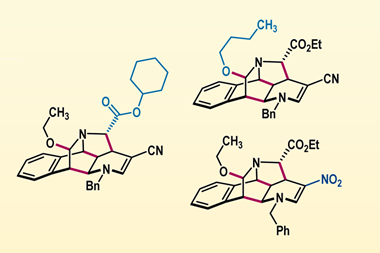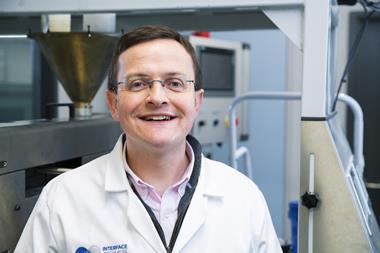Scientists have used elementary particles to investigate the effect of isotope identity on one of the most fundamental reactions in chemistry
Scientists have used muons, elementary particles similar to electrons, to investigate the effect of isotope identity on one of the most fundamental reactions in chemistry. The study created particles covering an unprecedented mass range, and found excellent agreement between theoretical predictions and experimental results.
Two teams - one experimental and one computational - used muons, subatomic particles similar to electrons but with a mass 200 times greater, to create the lightest and heaviest ’isotopes’ of hydrogen which differed in mass by a factor of 36 - the largest range ever investigated. The team then used these isotopes to probe the simplest substitution reaction, H + H2 -> H2+ H.
Donald Fleming, of the University of British Columbia, Canada, who lead the experimental effort, explains that the H + H2 reaction system is ’the most fundamental of reaction rates - the "quark of the chemical world" if you like, and consequently it has demanded attention ever since the first potential energy surface for H +H2 was published.’
Fleming continues that the H + H2 reaction is so well understood (at least at normal ranges) that the theory could almost be used to ’test’ the experiment. ’To give that up-ended claim credibility though, it is important to be able to compare isotopic reaction rates at the widest possible limits of a change in nuclear masses,’ he says.
Kinetic isotope effects are usually confined to a doubling of mass (for example substituting hydrogen for deuterium). The idea of extending the mass range has been around for over 20 years, says Fleming, but in 2007 he finally created two effective hydrogen isotopes with masses of one ninth and four by using muons. Muonium is an ultra light isotope that consists of a muon orbited by an electron, while muonic helium has a negative muon in its orbit, shielding the nucleus and effectively leaving one electron to react.
Painstaking work on the Triumf Cyclotron near the University of British Columbia eventually gave a good signal to noise ratio, before Donald Truhlar at the University of Minnesota modelled the potential energy surface of the reaction over the mass range investigated.
The quantum mechanical calculations agreed very well with the experimental data. ’I think you could say that it’s the first chemical reaction that one understands at the same level as one understands the helium atom,’ says Truhlar.
Iain McKenzie, who works in muonium chemistry at the Isis facility at the Rutherford Appleton Laboratory near Oxford in the UK, describes the extension of the mass range by such a large extent as ’unprecedented’ and is ’impressed that they attempted it and amazed that they achieved it’. McKenzie also explains that such validation of the theoretical methodology is important because it will give theoreticians confidence that their calculations are accurate.
Although Fleming concedes that in some ways the H + H2 system could now be considered a ’solved problem,’ he sees this as a beginning - now that he has worked out how to measure reaction dynamics using such heavy isotopes he hopes to use the technique to measure an array of reaction kinetics. ’Ultimately one would like to be able to investigate more complex reactions but first we have to crawl before standing erect,’ he concludes. He has already begun by investigating the ’prototypical polyatomic’ reaction, H + CH4.
Laura Howes
References
et alScience, 2011, DOI: 10.1126/science.1199421






No comments yet